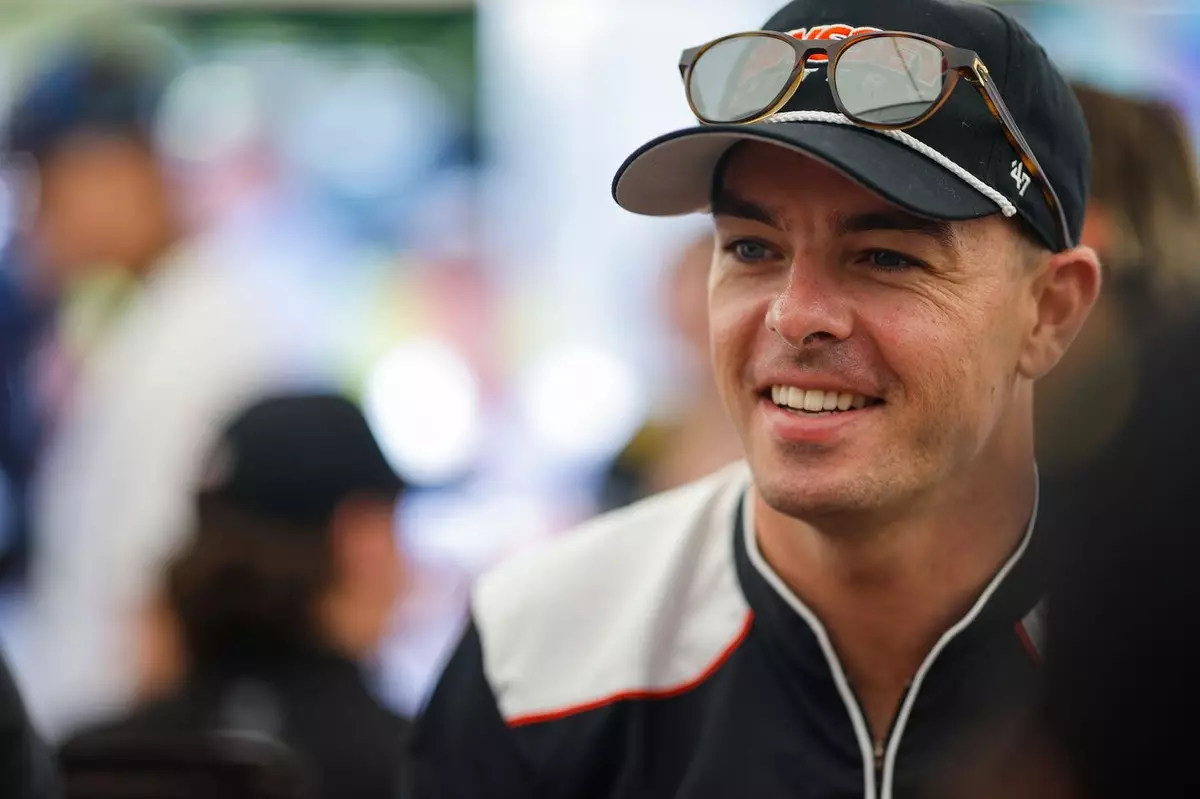In a surprising yet exhilarating move, legendary IndyCar driver Scott McLaughlin is set to cross the boundaries of traditional racing disciplines, venturing into the world of endurance GT racing at Suzuka. Known for his dominance on oval and road circuits with Team Penske, McLaughlin’s decision to race a Chevrolet Corvette Z06 GT3.R in the Suzuka 1000Km signifies more than just a “bucket list” item; it underscores an unrelenting hunger for new challenges and a desire to expand his racing horizons. His participation at Suzuka is a testament to the evolving nature of professional drivers, who are no longer confined by the borders of a single series but instead seek opportunities that fulfill their passionate pursuits.
This bold pursuit is driven not just by personal ambition but also by broader industry shifts. McLaughlin’s involvement with the Malaysian JMR team and esteemed factory drivers Alexander Sims and Nicky Catsburg reveals an encouraging trend where manufacturers and racers foster collaborative environments that push innovation and skill beyond conventional limits. Suzuka’s iconic layout offers a captivating battleground where driver skill, strategy, and machine resilience are tested to the max. McLaughlin’s participation elevates the event’s significance, serving as a reminder that true champions are measured not just by their victories but by their willingness to step into unfamiliar yet thrilling domains.
Reviving the Endurance Spirit at Suzuka: A Historic and Cultural Revival
Suzuka, a jewel in Japan’s motorsport crown, reclaims its status as a premier endurance race host after a hiatus caused by the pandemic. Returning to its venerable 1000km format, this race on September 14th reinvigorates a tradition that traces back over half a century. The event’s history, marked by ferocious competition and technical mastery, embodies the spirit of endurance racing, where sustaining pace and maintaining strategic clarity are paramount. With the race returning to its true length, the organizers are emphasizing quality over quantity, demanding teams and drivers to push their limits over a grueling 6.5-hour challenge.
This resurgence is symbolic; it signals a renewed respect for tradition amid a rapidly changing motorsport landscape. The jarring switch from a 10-hour race in previous years back to the classic 1000km format underscores a deliberate effort to honor Suzuka’s storied past. It is not simply a race but a celebration—a cultural festival that celebrates Japanese motorsport’s resilience and the global endurance racing community’s unwavering passion.
The event draws a fierce entry list, including international stalwarts and iconic liveries—such as the legendary Porsche “pink pig”—attesting to the race’s allure. This gathering of automotive excellence doesn’t merely entertain; it rekindles the enduring spirit of rivalry, craftsmanship, and the pursuit of excellence that endurance racing engenders.
Representation, Innovation, and the Power of Heritage in Modern Motorsport
At the heart of Suzuka’s comeback is a roster echoing diversity and innovation. McLaughlin’s collaboration with JMR, a prominent name in the Asian GT scene, exemplifies how global talent and resources are uniting for a common purpose: pushing the boundaries of what’s possible. Sharing the car with seasoned factory drivers demonstrates the importance of experience and mentorship in motorsport. Their combined efforts symbolize a melting pot of knowledge, a crucial ingredient for success in endurance racing where teamwork and synergy often eclipse outright speed.
Meanwhile, the inclusion of unique liveries like Porsche’s resurrected “pink pig” scheme introduces a nostalgic element that bridges the race’s rich history with contemporary innovation. The revival of such iconic branding displays a deep respect for legacy, which is a defining feature of endurance events. It reminds participants and spectators alike that behind every lap, every strategy, and every victory lies a story intertwined with tradition and evolution.
The event’s increasingly diverse entry list, from GT3 to prototype classes, reflects the broader trend toward inclusivity and technological advancement. It hints at a future where racing is less siloed and more interconnected—making endurance racing at Suzuka a fitting arena for both honoring the past and pioneering the future. This race is not just about racing; it’s a celebration of cultural heritage, innovation, and the relentless human drive to push beyond limits in pursuit of greatness.

